
BTO's Young Leaders Course
The attendees of BTO's Young Leaders Course reflect on what they learned at Spurn.
Earlier this year, the BTO announced yet another fantastic opportunity for the young bird and nature lovers in the UK. The BTO Young Leaders course, targeting 16-25 year olds, was to be held over 4 summer days at the spectacular Spurn Bird Observatory in East Yorkshire, and would be providing advice and support for the attendants on how to improve as a leader. So on the 5th August, 9 young people met in the observatory garden for the start of the course, which began with an icebreaker activity, helping us to get to know one another.
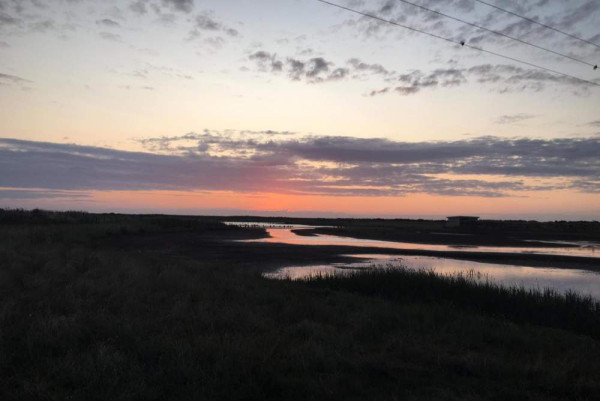
This blog was originally published on the BTO Young Birders' Blog. This blog is no longer active, but you can find an archive of old blog posts. All future Young Birders' Blogs will be published on our BTO Youth Blog page.
Monday 5 August 2019
Once we’d had an introduction to the course, we started by talking and writing a little about ourselves, and what our plans were for the future. For some of us, this was going to college or completing A Levels at school, while for the older group it was completing a university course/finding a job. To make us consider what could happen, we were given positive and negative scenarios to add in, so then we could be ‘assessed’ on how we would deal with the situation. This got us thinking early on about how we’d not just act for others but also ourselves. To follow this up, we all had to explain why we admired a certain leader. These included Greta Thunberg (Megan’s inspirational leader) and David Lindo (Sam’s pick,) while Gethin’s was Angela Merkel. We discussed a few key attributes of these, before having short break.
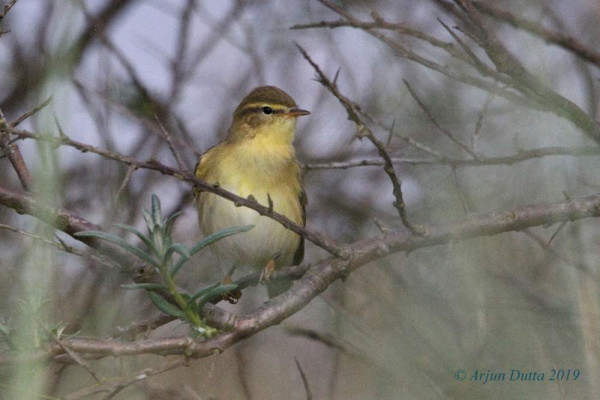
Linking to our first session, Faye then delivered a presentation about a Career in Conservation. This was arguably the most interesting part of the day so far, as it was useful for all 9 of us listening. Faye started by summarising where her career started, when she was of a similar age to us. However, we were surprised to find that none of her early jobs were related to the environmental sector. This really highlighted the need for us to care about all things, and not to be one-dimensional, so that we could earn enough to provide ourselves with opportunities later on when we really wanted it. It was fascinating to listen and watch videos of her working in areas such as Africa and Indonesia, where she often found herself doing things she wasn’t entirely comfortable doing, so then she could eventually find her ‘dream’ job. To finish off, we had a discussion about this and about jobs linked to the environment, answering many of our interests and questions.
A rushed evening meal provided opportunity for us to get to know each other a little better; after finishing, we all headed down to Kilnsea Wetlands to twitch a White-rumped Sandpiper, which had been regularly seen for almost a week prior. It was a top way to finish our first evening! (AD & GJJ)

Tuesday 6 August 2019
On the first morning, many of us ended up getting up early at around 5:30am to head out for a spot of birding. Being early in the migration season migrants were thinner on the ground than we would have liked, but a juvenile Cuckoo and Yellow Wagtails flying over cheered us up as were made our way back. After breakfast our day in the obs started at around 9am. We started off with a valuable workshop, about delivering Presentations, and I’m sure everybody else gained a lot too!
Before the week each of the attendees were asked to find a presentation which they had delivered previously, so we each did a quick presentation about this. We had 2 or 3 minutes to deliver a part of the presentation, before receiving feedback on our slides and presenting style.
The hardest thing about this activity was that as we went along and as others received feedback, we could spot mistakes and improvements before we even started our own talks. For example, things like presentation style (too much text, small images and bad use of colours) quickly became a recurring problem. However, it was really useful to hear how we were as presenters, as it’s often a rather daunting experience. Most of us felt a lot more confident by the end of the session. Everyone did such a good job of putting across their passion for the subject they had presented, but we all needed slight tweaks to make our speech as engaging as the images on screen. (AH)
Our session after lunch on the second day was run by Shaun Robson, a reserve warden from the RSPB, who focused on the importance of partnership working in conservation. Using the case study of RSPB Lytchett fields in Dorset, he highlighted the importance of conservation efforts and partnering with people from all areas of life, from wildlife trusts to politicians, councils and most importantly, the local community prior to making his decisions. The benefits of increased exposure, acceptance and expert advice also came with challenges, such as different groups having different priorities and the time consuming nature of negotiations. The thing that most struck me during this session was that, at the beginning of the talk, we were asked to come up with something we had achieved alone, with no external assistance. When we were later asked for our examples, nobody was truly able to present an achievement solely of their own, with no input be it from teachers, friends, family etc. This really emphasised how vital teamwork and partnership is in our daily lives, and in successful conservation schemes. Although it can be both challenging and time-consuming, the rewards of successful collaboration can be significant and can lead to further successes in the future.
I have already used the tips given in the workshops and will definitely use them again! This was worth learning about, especially as science communication is increasingly a part of conservation work. (CA)
... This really emphasised how vital teamwork and partnership is in our daily lives, and in successful conservation schemes.
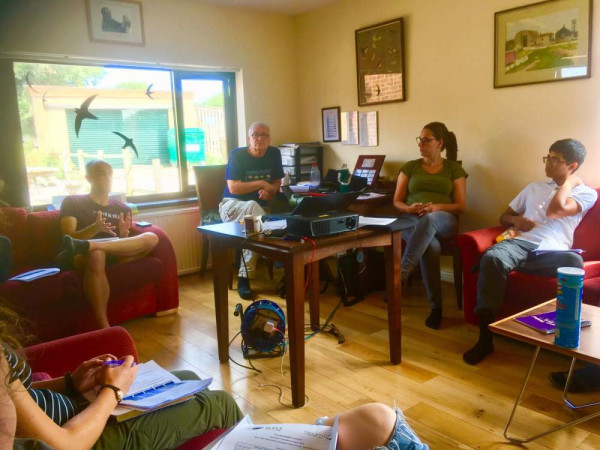
As I’m someone who only hears tweets from Chiffchaffs and spends more time watching Whinchats than group chats, I felt that the penultimate talk on Tuesday led by Faye about social media was particularly fascinating! There’s more strategy to it than any of us thought, and with technology becoming more and more important to the world, it was extremely important to learn about how is best to use it. For all of us, including some of us who had very little social media, it introduced us to new ways of opening up new doors for ourselves. Later on, in our final few hours of the day, we had the most bizarre (yet enjoyable) session of the entire weekend – we were to have a lesson in networking with a fake conference party (!). Before it started we were each given a task to complete during this ‘party’ (such as forming a partnership or raising a certain amount of money). Then, using a combination of our social skills, wits and charm we were to try and achieve our tasks by talking to the BTO staff – each of which were acting in a certain role, such as a politician, and a philanthropist. With all of it purely acting, it was hard to keep a straight face at times. Not only was it difficult for all of us, as it was very much outside our comfort zones, it was surprisingly educational and a laugh, with Jonnie Fisk (Obs Estate Manager) joining the leaders to add to the fun - it was a surreal experience and a learning curve so steep Guillemots were making their nests on it! (LH)
Some of us spent the evening birding (and dipping on the local family of Marsh Warblers) before heading to the pub to end a tiring but intensely interesting first full day at Spurn.

Wednesday 7 August 2019
As Wednesday morning dawned nice and sunny, most of us were up and out early for some more birding, with some good migrant birds seen in particular. Once everyone had returned to the observatory our day began again; for our first task, we were to choose a conservation project, and pick a famous or reputable person to contact about supporting it. This allowed us to think about and get feedback for ideas in order to publicise and get support for conservation projects, which is incredibly important. I personally chose the issue of a lack of Common Swift nest boxes and how to mitigate this, but struggled to think of a suitable person to support, until another Young leader (creatively) suggested Taylor Swift! This really helped us to think outside the box, which we now know to be a surprisingly useful skill. This exercise was a brilliant start to the day, and really developed our influential skills, with much of the morning dedicated to learning more about this. (AB)
We then had a session run by Nick W, where we learnt about how to prepare and run a meeting. We learned how to divide up the time in the meeting in order to maximize efficiency and minimize the time wasted for the attendees. We also discussed how a meeting can be held effectively enough to be beneficial for concentration and to achieve the desired outcome, as well as learning about how to chair it and how to behave when attending one ourselves. This session was very useful at establishing an understanding of work etiquette for our future, regardless of what career paths we may follow.

To follow up a session on meetings, Nick Moran chaired a discussion on the topic of ‘walking the walk’. This was to discuss how important it is to maintain the beliefs of your organization during your personal life. For example, Greta Thunberg is a climate change activist and to travel for speeches and conferences, she uses public transport and boats in order to minimize her carbon footprint. Would it be hypocritical for her to campaign for a cause if she was undermining the points made during her personal life, for example by taking frequent plane journeys? This was the type of topic that we discussed during our session. It was very interesting to hear a variety of views on the thought-provoking subject, helping me to reflect on my own personal beliefs. (MM)
After lunch on the third day it was a chance for all of us to lead a guided walk. This could be on absolutely anything, not just wildlife, so we could develop our skills. I was up first and I decided that the theme of the walk should be on Warblers and migrant birds. What I hadn’t realised was just how difficult it was going to be leading a walk with everyone trying to throw all the possible worst-case scenarios at us. My plan was to go a fair distance down the road however by the end of my allotted time we had managed to get to the back of the garden. Thankfully the garden was full of warblers making my walk slightly easier despite the distractions, which also included bizarre questions and someone playing a tape lure…
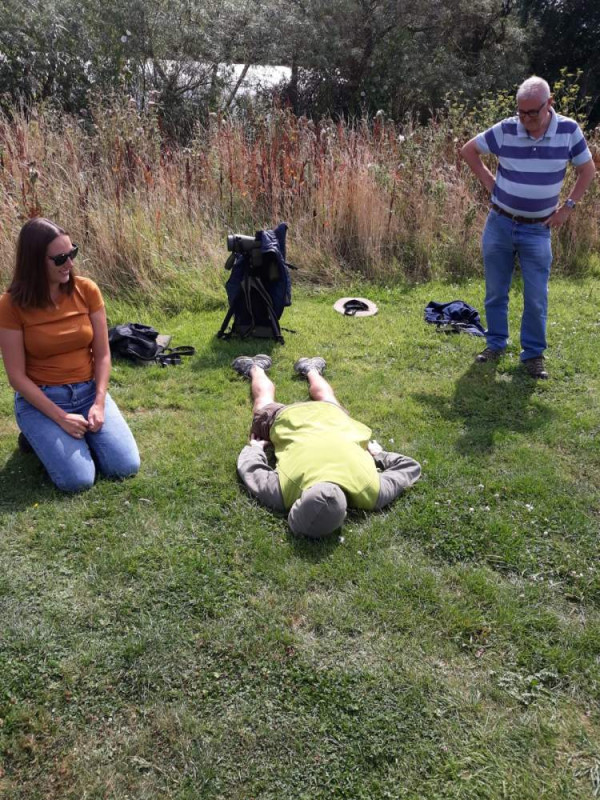
I think everyone was surprised at just how different all the walks and activities were. Amy’s activity included a comical game of wink murder, which tested her ability of dealing with a medical emergency. In this case, Nick Moran collapsing on the floor! Next up was Megan’s Pictionary game where participants were given a bird that they had to draw and the rest of us had to guess what the bird was. This helped us to learn about leading activities for a variety of ages. Following this, Alfie led a walk looking at the different species of plants (particularly trees) in the observatory’s garden. This brought out some hilarious moments, with the walk eventually finishing with everyone laughing uncontrollable. All because of Alfie replying to Nick’s question of ‘What does the scientific name of Hawthorn (Crataegus monogyna) actually mean?’ with the simple answer of ‘It just means Hawthorn! With Alfie keeping a cool head, it meant his walk was extremely successful.
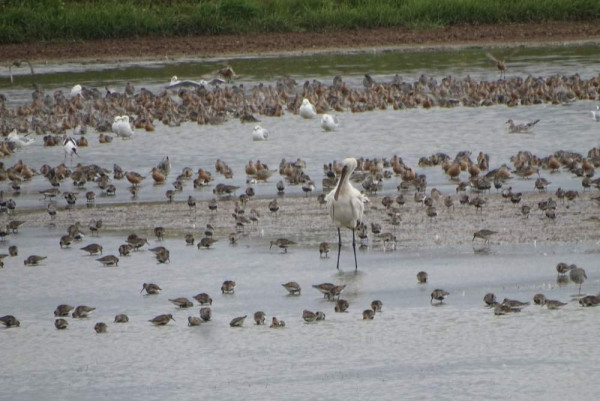
Finally, it was Arjun’s turn. This turned into a complete disaster, foreshadowed by the weather which went from clear and sunny to dark and rainy. After a brief introduction inside on how to use technology and apps in order to identify and record species, it was time to head outside and see what we could find. However, after Arjun had provided us with some of the most annoying situations, everyone made his life difficult, with people getting stuck in toilets, talking to real people in phone calls and disappearing - some may say that he is still looking for them!
The point of this afternoon was for the leaders to look at our personalities and how we dealt with different pressures. It was also interesting for us to learn about situations that we may come across when guiding future walks and how to handle them, as well as being thoroughly enjoyable. Reflecting on this over a month later, I realise that actually I learnt a lot, but I didn’t realise it at the time, as the others and I were having such a great time (which is one of the best ways of learning!) Our final session at Spurn finished with planning our activity for the next morning, taking into account all skills already learned.
Our final, awesome evening meal in the Crown and Anchor was well-spent and louder than it had been on Monday, made all the merrier when we remembered it was Ceri’s 18th Birthday. There’s probably no better place in the UK to spend it than Spurn… Then we all decided to hang around the observatory, where we had a fantastic time enjoying each other’s company, relaxing and even spending a few hours playing cricket in the dark with a sponge ball and a piece of fire-wood! (SL)
Thursday 8 August 2019
On our final morning, it was a final chance to get up early one last time to experience the amazing area by the observatory. After some early morning birding, we all returned to the obs ready to lead an activity which we had been given a few days to prepare for. Following Amy’s fascinating role play where we acted in different roles for a Hen Harrier Reintroduction scheme, we started the day with a light-hearted, animal emoji quiz organised by Alfie, which was unsurprisingly competitive! Luke then started an interesting, environmental debate, which really brought out some interesting views from all of us, while Gethin continued with a British wildlife quiz, testing our understanding of conservation techniques used in the UK. Before we went outside, Ceri led a well-planned, detailed ‘classroom-like’ situation, which cleverly highlighted the importance humans have in protecting nature. With the sun shining in the warmest day of the week, Megan began a competitive bird race in the nearby area, with the two teams managing to see some decent species including a juvenile Cuckoo. To finish off the activities, we both organised a Bioblitz of the obs garden, where we recorded as many species as possible in our given time, before we headed back inside so Sam could lead a research task on some of the animals we’d seen. Not only did we see and note some interesting species, but also got to learn some fascinating facts about some common British creatures.
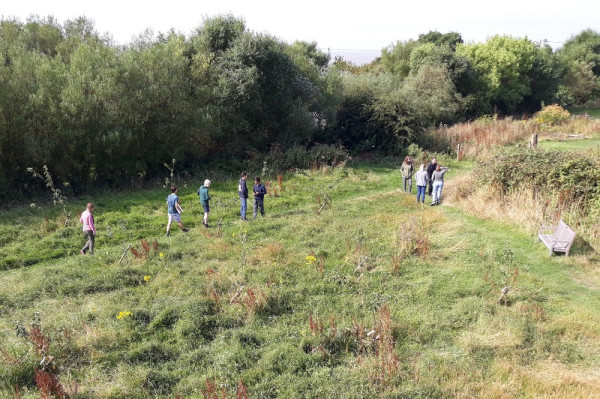
Our last morning had so far been awesome, and after a relaxed lunch spending time talking to each other, we had time to speak individually to the leaders of the course, where we were given advice specific to ourselves, to help our own leadership in nature activities in the future. We also had the chance to give back feedback on how we thought the week had gone, so that future years could be even better.
Once we’d done this, we spent some time analysing how to measure success. For us, we all agreed the week had been extremely useful and every one of us enjoyed it. This brought an end to the Young Leaders Course, and we could only thank the 4 real leaders for their incredible effort over the 4 days; thanks to Nick Moran, Faye Vogely, Nick Whitehouse and Shaun Robson, for organising such a beneficial, enjoyable event, that we would all fondly remember. Also many thanks to the BTO, and to Spurn Bird Observatory for hosting us.
(AD, JF)
Thank you for reading, and hopefully Spurn will be welcoming you next year.
... we all agreed the week had been extremely useful and every one of us enjoyed it.








Share this page